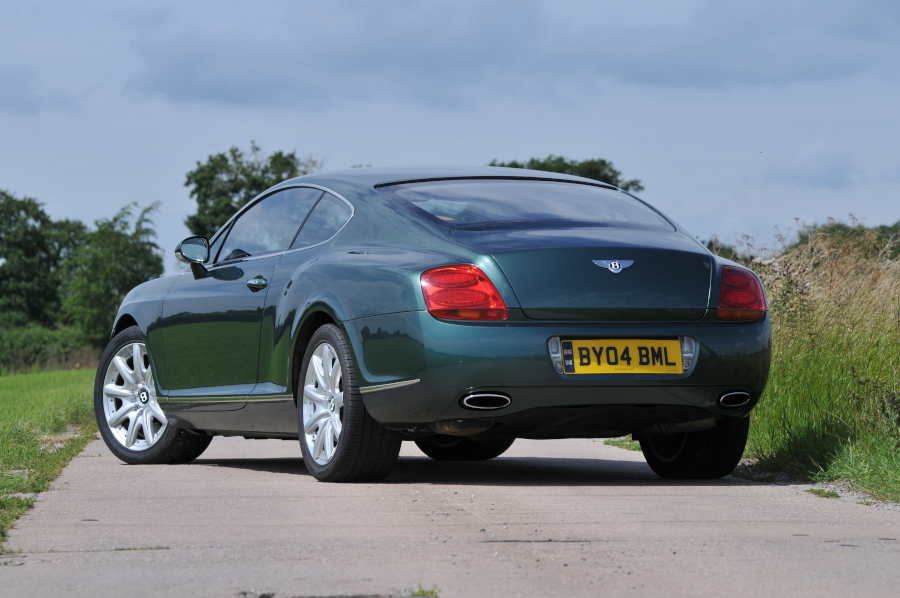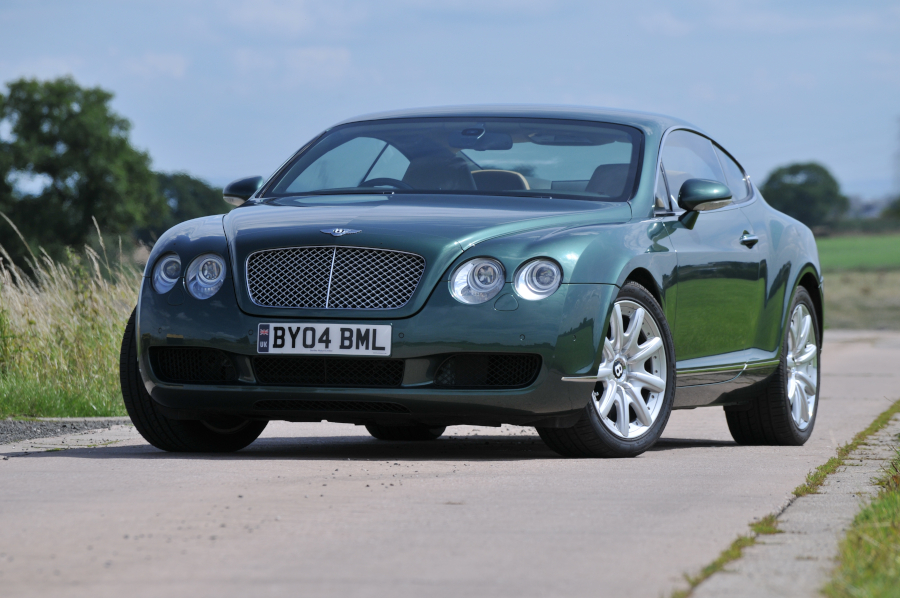Here’s everything you need to know when shopping for the first of the Volkswagen-era Bentleys: the Continental GT and Flying Spur
The soap opera which saw two German giants squabbling over the most prestige of British automotive brands has been well documented previously, but here’s a brief recap: Volkswagen swooped in with a last-minute bid to grab Rolls-Royce and Bentley from under the nose of BMW but shortly afterwards discovered that the deal didn’t include the rights to the crucial Rolls-Royce trademarks. These were held by Rolls-Royce the aero-engineering company, which was prepared to license them to BMW as an existing business partner in the aerospace world but not to VW Group, rendering the acquisition all but worthless to the Wolfsburg brand.
Popular opinion suggests a deal was quickly thrashed out in a Bavarian restaurant which then saw the two marques split for the first time since 1931, with BMW taking the Rolls-Royce marque and Volkswagen retaining Bentley and the Crewe premises. In the short term, both Rolls and Bentley-badged cars would be made by Volkswagen until January 2003, when BMW’s new Goodwood plant would start turning out Rolls-Royces.
Naturally, Volkswagen claimed this was the outcome it had wanted all along, Bentley being the brand with the greatest volume potential but industry pundits dismissed this as a desperate face-saving spin from the PR people. Now though, with the benefit of hindsight it seems we may have been too quick to judge, since the Volkswagen era has seen Bentley blossom where rivals like Jaguar have simply withered away.
Whatever the truth of the matter, the harsh reality was that Volkswagen had its work cut out in the first couple of years. Not only did it need to re-engineer the Arnage to avoid the embarrassing spectre of producing a car with a BMW engine, but in the medium term it also needed to develop an all-new Bentley.
The first problem was overcome by the brilliantly simple expedient of resurrecting the old L-Series V8 which – once the front end had been suitably reinforced to bear the extra weight – gave the Arnage the character it had always lacked and a new lease of life.
The second was more of a challenge, but VW did have a secret weapon to hand courtesy of the car which had always been regarded as boss Ferdinand Pïech’s greatest folly: the Phaeton. Powered in its top-end form by the curious W12 engine – essentially two VR6 motors – and riding on air suspension with four-wheel drive transmission, the Phaeton was a technological showcase for VW Group. The scale of Pïech’s ambition for the car was illustrated in the brief for the air conditioning: it was required to maintain a cabin temperature of 22°C at 186mph in 50°C ambient temperature.
In short, it was the Phaeton which would provide the template for the first of the VW-era Bentleys and also a handy short-cut in development time. With twin turbos strapped to the 6-litre W12 and Dirck van Braeckel’s sleek feline body recalling the Type R Continental, the result was the Continental GT which was unveiled in 2003 and was by any standards an impressive reworking of the 1950s Bentley heyday for the 21st century.
As launched, the two-door Continental GT boasted 550bhp and 480lb.ft, translating to a top speed of 198mph and 0-60mph in 4.8 seconds, seating four adults in an interior which boasted all the handcrafted appeal of the older cars but with the precision and quality of a modern premium car.
In 2005 the GT would be joined by a four-door version, the Flying Spur as well as the convertible GTC, while in 2008 the 603bhp Speed joined the range. A second generation arrived in 2011 courtesy of a major facelift which added a V8 engine option, while an all-new third generation was unveiled in 2018.
At £111,000 when launched, the Continental was an expensive car by any standards but it was still half the price of the outgoing models, meaning that VW’s volume aspirations were very quickly realised.
Naturally this had benefits for the used buyer and the sheer volume of Continentals produced – both GT and Flying Spur – means they are temptingly affordable today.
Bodywork
One thing the Continental doesn’t do is rust, so if you see unsightly corrosion beyond the level of festering stone chips then question the car’s history and look for signs of accident repair.
Having said that, their five-metre length does mean things like scraped bumpers aren’t uncommon and since OE Bentley parts are crushingly expensive, repairs are often made with used parts or smart repairs like plastic welding and it doesn’t necessarily mean the car’s been in a big shunt.
Don’t be suspicious though if the wing mounting bolts show signs of being disturbed, as underbonnet access is so tight that several service procedures require the wings to be removed.
Elsewhere, cloudy headlights are a common issue but can be revived easily at home by flatting and polishing, while it’s worth checking the rear lamps for damage as anything Bentley-specific is costly. Parking sensors, on the other hand, are shared with other VW models including the New Beetle so can be sourced easily and cheaply, often in the right colour.
Check the glass for signs of clouding at the edges, which is a sign that the double glazing is starting to delaminate. Tints are often used to hide the issue, but on the front side windows it’s generally illegal anyway.
On the Flying Spur, check that the powered bootlid opens and shuts, as this is a common failure but repair can get expensive. It also means the bodywork can get damaged by people opening the lid when it’s failed, since the emergency release is hidden under the rear seats and not all technicians will know of its existence.
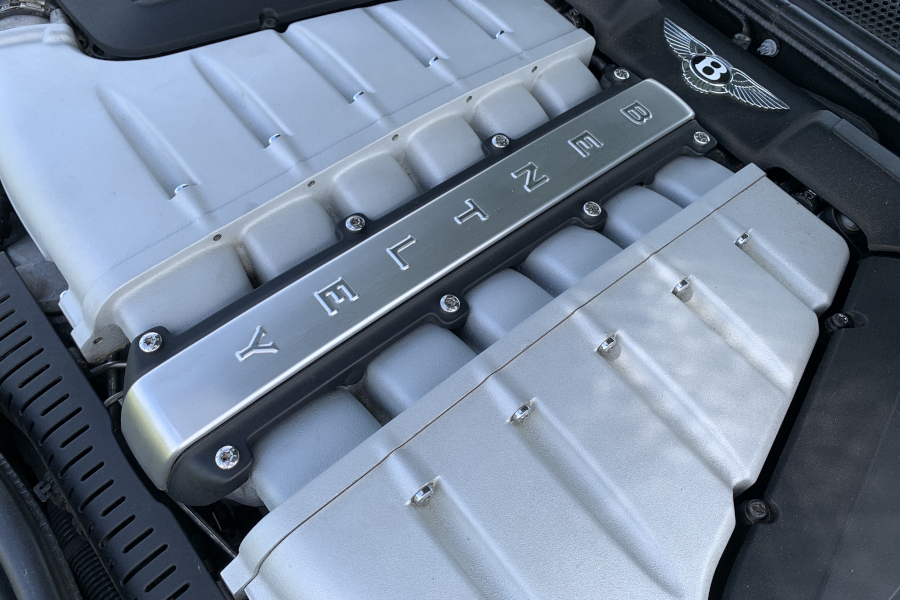
Engine and transmission
It’s here where the big bills are hiding, not so much because of any inherent unreliability but because the access around the big W12 is so very tight. The same engine in the Audi A8 and VW Phaeton has a lot more room around it, whereas the Continental bodywork is essentially shrink wrapped around the running gear.
It’s so tight that you can barely get a hand in there, and even an experienced mechanic will constantly come up against little hurdles: for example, getting to the frontmost coil packs requires removal of the entire inlet manifold, while getting to the water pump means removing the car’s front end. Neither are big jobs but you need to have the confidence to tackle things like this if you’re planning on saving a few quid through DIY maintenance.
Beyond the scope of even the keenest DIYer though is the need to remove the engine for many tasks, notably gaining access to the sensors on the back of the engine which are often the cause of the engine warning light. Bentley specialists with the right equipment might be able to access these for you by tilting the engine rather than removing it entirely but it shows that if you’re buying a Continental with the engine warning light on then you need to know exactly what has caused it.
The water temperature gauge may be the same as you find on a Mk5 Golf but be aware that the needle sits at 80-90° rather than the straight-up 60° of the Golf. Any higher than this during normal driving suggests an issue with the cooling system and an engine thermostat is over £900 for the pre-2005 cars. The water pump is more affordable but requires removal of the entire front end to access, so the job will inevitably include replacement of anything else which breaks in the process. As you can imagine, if the engine has been cooked then replacing the head gaskets is an engine-out job.
Another issue affecting the pre-2005 cars is the positioning of the boost control on top of the gearbox, underneath the bodywork. When problems arise – and they will – it’s another engine-out job to access the pipework, although it’s not unknown to find the pipes rerouted under the car.
Compared to the potential issues with the engine, the six-speed ZF transmission is a breeze and rarely causes problems. It’s a standard torque converter automatic and although Bentley fitted paddles to actuate a ‘manual’ shift the box is so slow to change compared to a modern DSG that they’re all but useless. Also they’re fixed to the dashboard rather than rotating with the steering wheel, meaning that when you want them they’re out of reach…

Suspension, steering and brakes
Like so many luxury cars of the era, the Continental uses air suspension all round and it’s actually a pretty reliable set-up – certainly it’s less troublesome than the contemporary Range Rover.
The air compressor lives under the spare wheel in the boot and is a feasible DIY replacement while aftermarket air struts are more affordable than OE Bentley items. Replacing the struts is even possible at home for the keen DIYer but bear in mind that the bolts securing the strut tops to the bodyshell are stretch bolts and should not be reused. Check to see that they are tight on any car you’re viewing as the ‘stretch’ is what locks them and if reused then they can work loose. We’ve even seen cars where one or more bolts have fallen out entirely.
Calibrating the air suspension requires the correct diagnostic software on a laptop and is an involved process involving first entering the security access code and then measuring each corner, entering the values into the software before changing a fifth value to let the car know it needs adjusting, after which it should level itself up. All too often people try to lower the car by entering the desired height rather than the actual height, which results in the car sitting at the wrong angle.
Aside from the air struts, the suspension is pretty conventional and most jobs are no harder than doing the same work on the bigger Audi and VW models. At 2.5 tonnes though, these are heavy cars and do take their toll on suspension components, especially the bushes so be prepared for regular replacement, especially at the front end. Clonking over speed bumps and pot holes at lower speeds is a good clue as to where problems might lie.
Unsurprisingly considering the weight and power of the Continental, the car comes with a mighty set of stoppers which in fact were the biggest brakes fitted to a production car at the time. It’s a conventional system but the discs themselves are huge, the front pair weighing in at some 10kg each. This of course means they’re correspondingly expensive, a set of front discs and pads coming in at over £1000 even with quality aftermarket parts.
Bentley doesn’t allow a huge tolerance for wear, so it’s worth checking the state of the discs on any car you’re viewing. Any prominent lip worn around the edge means they’ll need replacing soon, so negotiate accordingly.
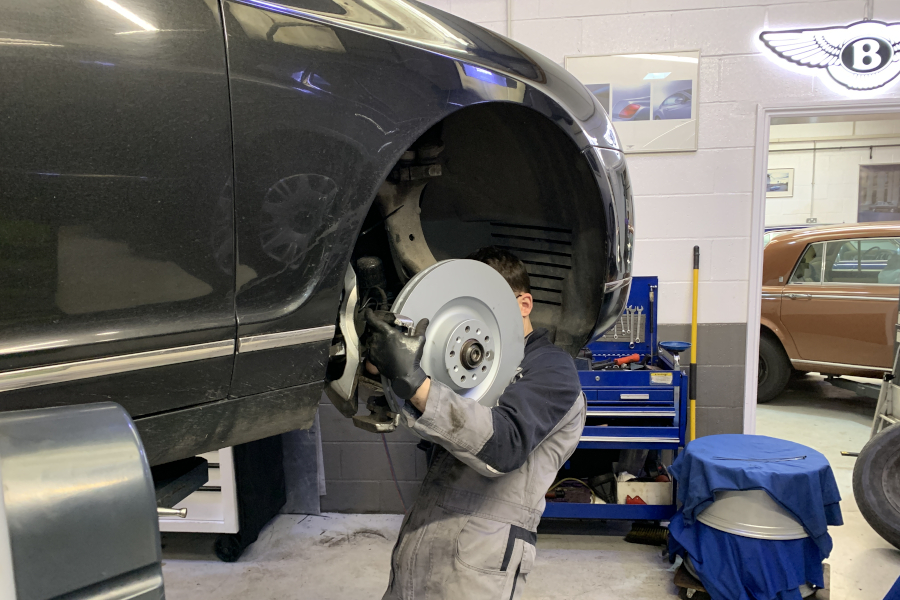
Interior, trim and electronics
The interior might look familiar to anyone well versed in turn of the century VW Group fare but look closer and everything you touch or feel is a Bentley-specific part – for which, read more expensive than the Golf/Passat/A4 part it might resemble.
As we’ve said though, Bentley sold far more of these cars than any previous model, so there’s scope for tidying up a tired interior with used parts. The cabin generally wears the years well and although the lighter shades of leather will tend to pick up the grime, a proper recolouring kit can work wonders.
One problem specific to the GT is the headlining drooping, but since it’s a relatively small part and is fitted in two halves, it’s a straightforward DIY task to sort it out.
Bear in mind that the interior of cars with the Mulliner Driving Specification package are generally nicer and the diamond quilted seats don’t seem to have dated as quickly as the flat leather on the regular models.
One limitation of the Continental is a lack of any auxiliary input for the audio system, even on cars with the built-in Bluetooth hands-free phone interface. There are complete replacements available, incorporating an Android screen and replacement dashboard section but opinions vary as to how well they work, since many of the car’s functions are accessed through the central screen.
A much simpler and cheaper option we’ve used is the Grom Audio interface which replaces the CD changer and connects to your phone via Bluetooth to play media. We found that the iPhone will happily connect simultaneously to the car’s hands-free for phone calls and to the Grom unit for media, making it an elegant solution.
On the subject of electronics, the Continental has two batteries – a big one on the nearside to run the car’s onboard systems and a smaller one on the offside purely for starting. The starting battery tends to go flat when the car is left for a while, but it can be started from the main battery by twisting the key momentarily to the left first. If a seller does this on a test drive, then it means the starting battery is weak and will need replacing.
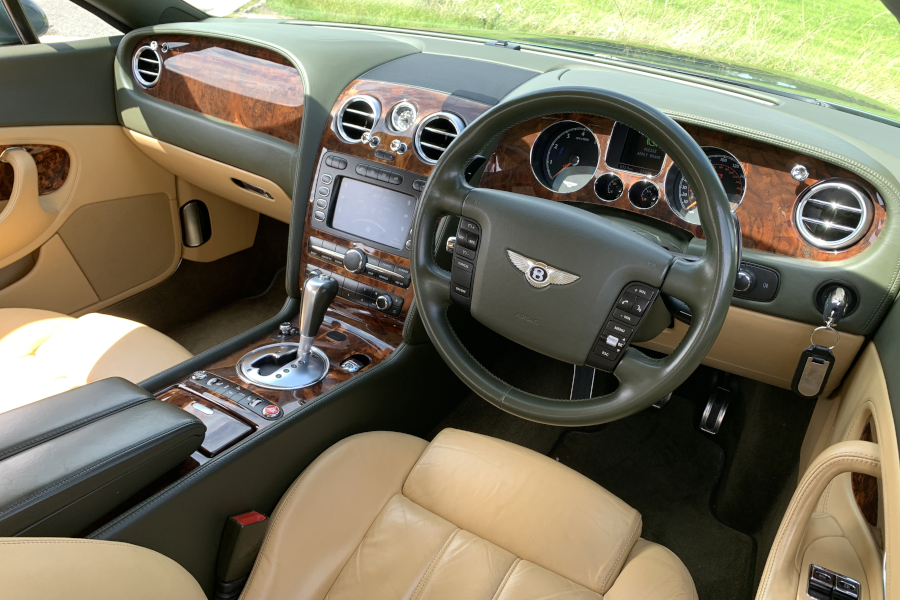
Bentley Continental: our verdict
If you want a Continental, then there’s probably not much that will stop you – and they are majestic beasts, with a top speed of 200mph and a real presence. No, they don’t do much more than 21mpg and yes, they can be expensive to run but buy carefully and they needn’t be the ruinous experience you might have been led to expect. Crucially, look for a car which has done more than 1000 miles a year as they really do suffer when they are sat around unused. In fact, don’t be scared of higher mileages in general as the Continental is as solid in this respect as its Audi siblings.
Our advice would be to avoid any cars with the engine warning light on, read through the car’s history very carefully and if possible have it inspected by a Bentley specialist first. One thing’s for sure though: they won’t make anything like this again, so if you want one then get one while you still can.
Advice from specialists in these cars is to set aside £2000-£2000 a year for maintenance, knowing that some years you won’t spend anything like that much but some years you might need it all and more.
Oh, and don’t believe all those “it’s just a big Volkswagen,” comments. It’s really not…
Bentley Continental timeline
2003
The Continental GT is announced in March, with the first deliveries in November
2005
The four-door Flying Spur and the convertible GTC are announced
2008
The 603bhp Speed is added
2010
The second generation Continental is unveiled. Effectively a major facelift of the original, it gains V8 power from 2012
